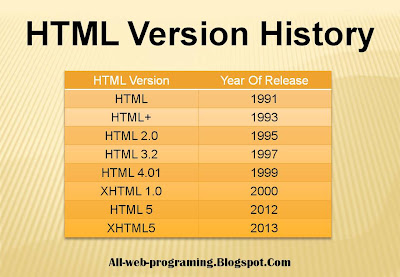In this lesson we will discuss some basic tags of html standard web programming language. We will see how html link tags, paragraphs tags and image work. We will see some examples of each of these tags. Don't worry if you find these basic tags difficult to understand, we will discuss each of this tags in detail in the next upcoming lessons. Stay focused and you will definitely find our teaching methods interesting.
HTML Headings
Heading in common words are known as titles on a paragraph or some piece of text. These are used to make some text more visible and get attention from the reader. Similarly in html, heading tags are defined as titles of some piece of text or anything.
In html to make a heading we us <h1> tags. There are total six types of headings we can use in our html works. They start from <h1> and end at <h6>. The <h1> heading is the largest heading and <h6> is the smallest one. These tags also require closing tags. The closing tags are defined as </h1>, </h2>, ... ... , </h6>. Here is an example of these tags. It shows proper method to use these tags.
Example:-
<h1> This Is The H1 Type Heading </h1>
<h2> This Is The H2 Type Heading </h2>
<h6> This Is The H3 Type Heading </h3>
<h4> This Is The H4 Type Heading </h4>
<h5> This Is The H5 Type Heading </h5>
<h6> This Is The H6 Type Heading </h6>
Anything which comes between opening and closing tags of HTML headings will be rendered as headings by Internet browsers. We have not showed you the browser rendered results of this example because these results vary from browser to browser and also depend on type of browser used and settings of browser too. The best way is that you make yourself an HTML file of this example and see the result yourself. Find out more about making an HTML file.
HTML Paragraph
In the last section of HTML headings we showed that you can apply headings to a certain piece of text in an HTML document. Usually this text in an HTML document is showed using a paragraph tag. Paragraph tag starts from <p> and ends at </p>. It is absolutely necessary to close the paragraph tag. There are some HTML tags which do not require closing tags and we will talk about this in upcoming lessons. Here is an example of HTML paragraph tag.
Example:-
<p> this is a paragraph. It can include text, images and other multimedia and interactive content. </p>
Go try it in an HTML file.
HTML Links
HTML links are defined using <a> tag and it has a closing tag of </a>. There are many attributes associated with the link tag and we will discuss all of them in a separate lesson. Here comes an example of HTML link tag.
Example:-
<a href="http://allwebprograming.blogspot.com/">This Is A Link To A Web Address</a>
Link styles also vary from browser to browser therefore you will have to try it yourself in order to see the best result. A single html tag can have multiple attributes. What are attributes? Why they are so important? These questions we will answer in later lessons.
HTML Images
Images and other multimedia can be added into Webpage using HTML code. We use <img> tag to add images in an HTML document. Like HTML link tag, HTML image tag <img> can have one or more attributes. Don’t worry with the world attributes. There is a whole lesson dedicated for HTML attributes only. An example of HTML link tag is given below.
Example:-
<img src="w3schools.jpg" alt="W3Schools.com" width="104" height="142">
The src attribute can have different values depending on the location of your image file. we will discuss that later in a lesson.
This was just an introductory lesson for beginning real HTML learning. In fact you need to master all or at least some more commonly used HTML tags in order to master HTML programming language. This was somehow a boring lesson but be patient, you will get every single detail on every single HTML tag in our next lessons.




